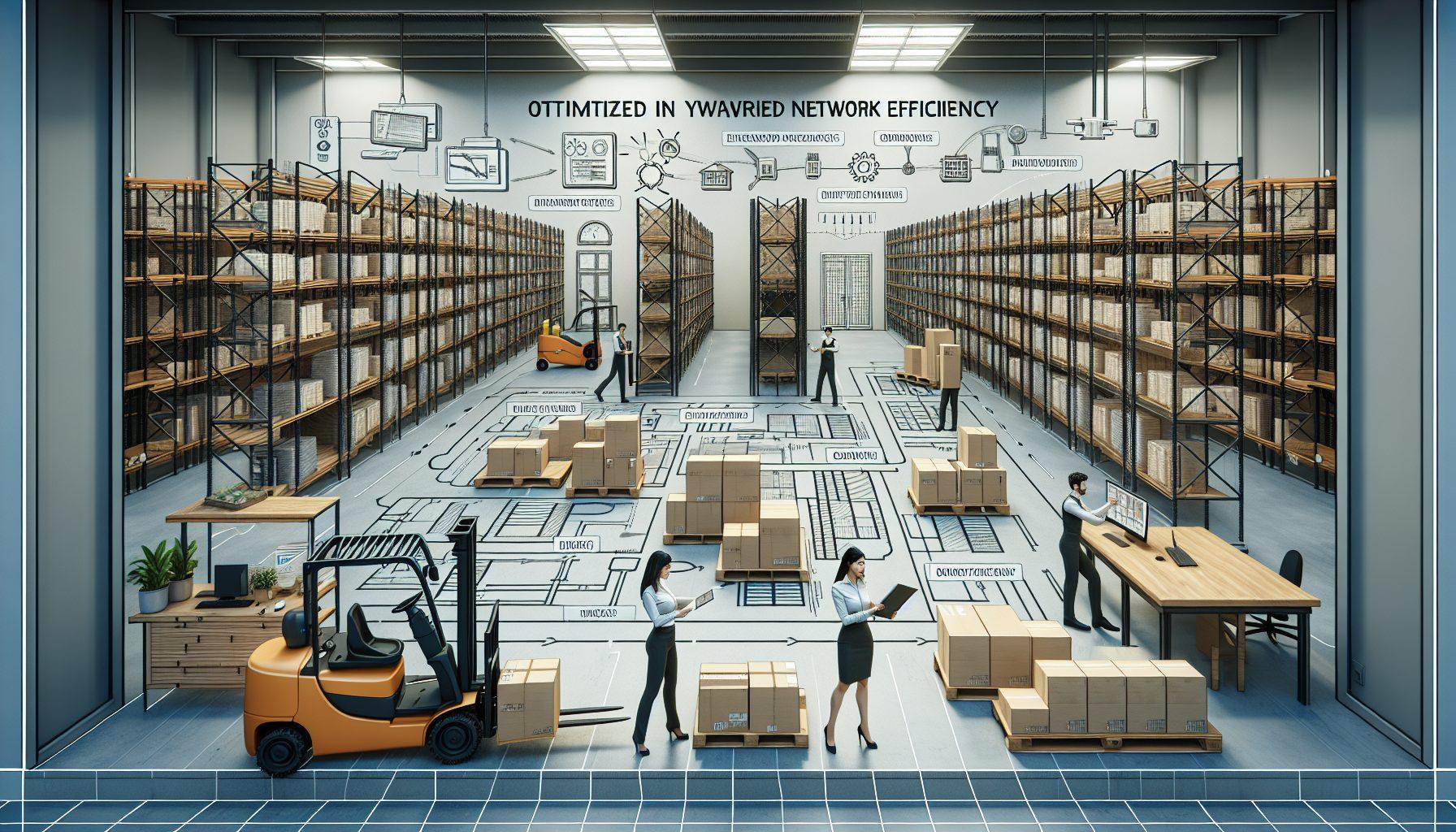When it comes to warehouse operations, optimizing the layout is crucial for achieving network efficiency and overall productivity. A well-designed warehouse layout can streamline operations, reduce costs, and enhance safety. In this article, we will explore some key strategies to optimize warehouse layouts for maximum network efficiency.
1. Analyze the Current Warehouse Layout
The first step in optimizing warehouse layouts is to analyze the current setup. This involves understanding the flow of goods, identifying bottlenecks, and evaluating the utilization of space. By conducting a thorough analysis, you can identify areas for improvement and make data-driven decisions.
Warehouse network optimization is a critical aspect of this analysis. It involves assessing how warehouses are connected within a network and evaluating the efficiency of transportation routes. By optimizing the network, you can minimize transportation costs and ensure timely delivery of goods.
2. Implement Lean Principles
Lean principles focus on reducing waste and maximizing value in warehouse operations. By implementing these principles, you can improve efficiency and streamline processes. Some key strategies include:
- Reducing excessive inventory levels
- Implementing visual management techniques
- Streamlining material flow
- Standardizing processes
By adopting lean principles, you can create a more organized and efficient warehouse layout, leading to improved network efficiency.
3. Optimize Slotting and Storage Systems
The slotting and storage systems within a warehouse play a crucial role in network efficiency. By optimizing these systems, you can minimize travel time, reduce picking errors, and maximize space utilization. Here are some strategies to consider:
- Grouping fast-moving items together for easy access
- Implementing a dynamic slotting strategy based on demand patterns
- Utilizing vertical space through mezzanine floors or high-density storage systems
- Implementing automated storage and retrieval systems for faster and accurate picking
By optimizing slotting and storage systems, you can enhance the overall efficiency of warehouse operations and improve network connectivity.
4. Utilize Technology Solutions
Advancements in technology have revolutionized warehouse operations. By utilizing technology solutions, you can automate processes, improve accuracy, and optimize network efficiency. Here are some key technologies to consider:
- Warehouse Management Systems (WMS) for inventory control and order management
- Real-time location systems (RTLS) for tracking and visibility of goods
- Barcode scanning and RFID technologies for accurate inventory tracking
- Automation and robotics for faster and efficient picking and sorting
Integrating these technology solutions into your warehouse layout can significantly enhance network efficiency and overall productivity.
5. Continuous Improvement and Adaptability
Optimizing warehouse layouts for network efficiency is an ongoing process. It is important to constantly evaluate and improve your layout based on changing business needs, market trends, and customer demands. Regularly analyze data, gather feedback from your team, and seek innovative solutions to enhance network efficiency.
Remember, each warehouse is unique, and what works for one may not work for another. It is essential to customize your layout optimization strategies based on your specific requirements and goals.
In conclusion, optimizing warehouse layouts is critical for achieving network efficiency. By analyzing the current layout, implementing lean principles, optimizing slotting and storage systems, utilizing technology solutions, and embracing continuous improvement, you can create a well-organized and efficient warehouse that enhances network connectivity and maximizes productivity. Get started on your warehouse network optimization journey today!

